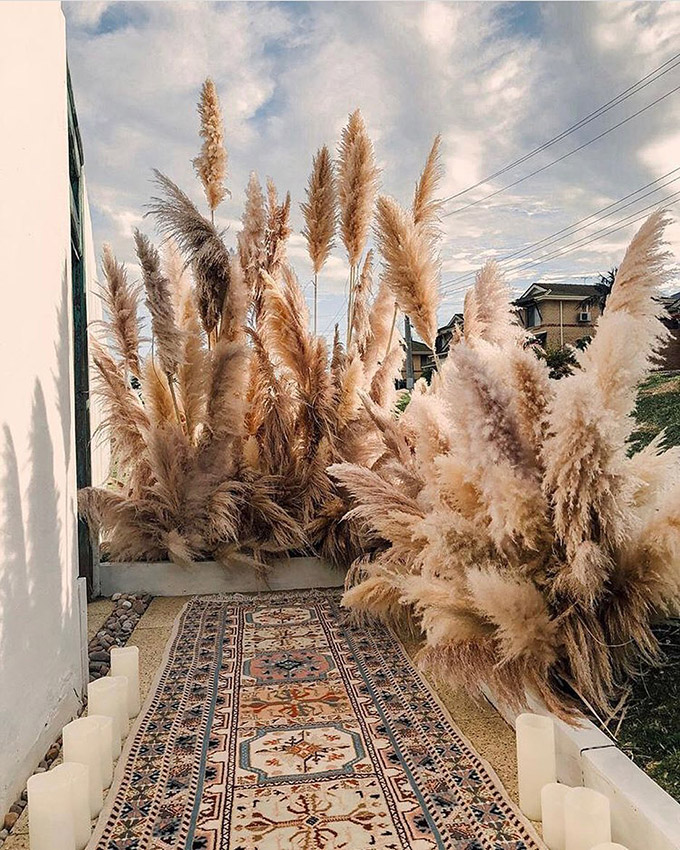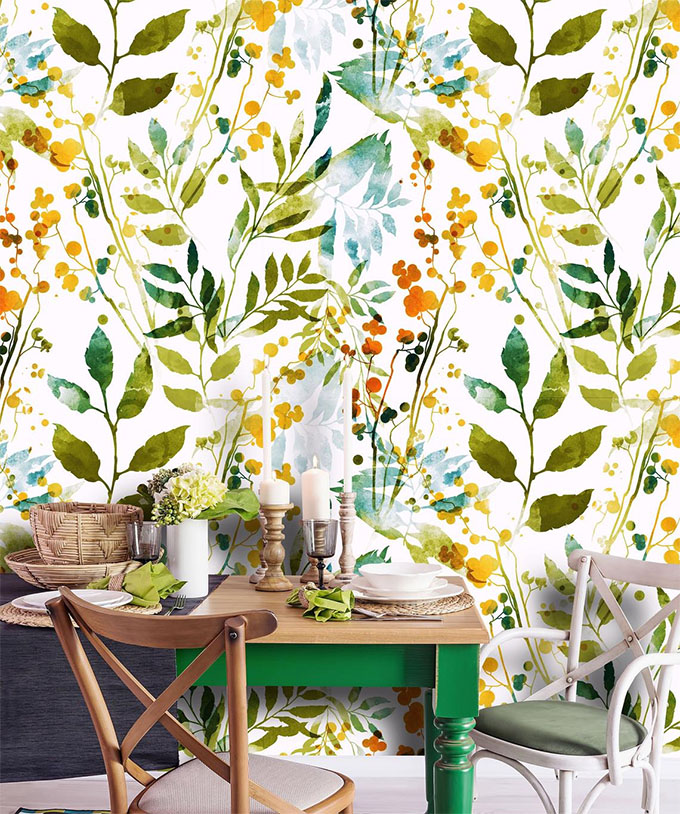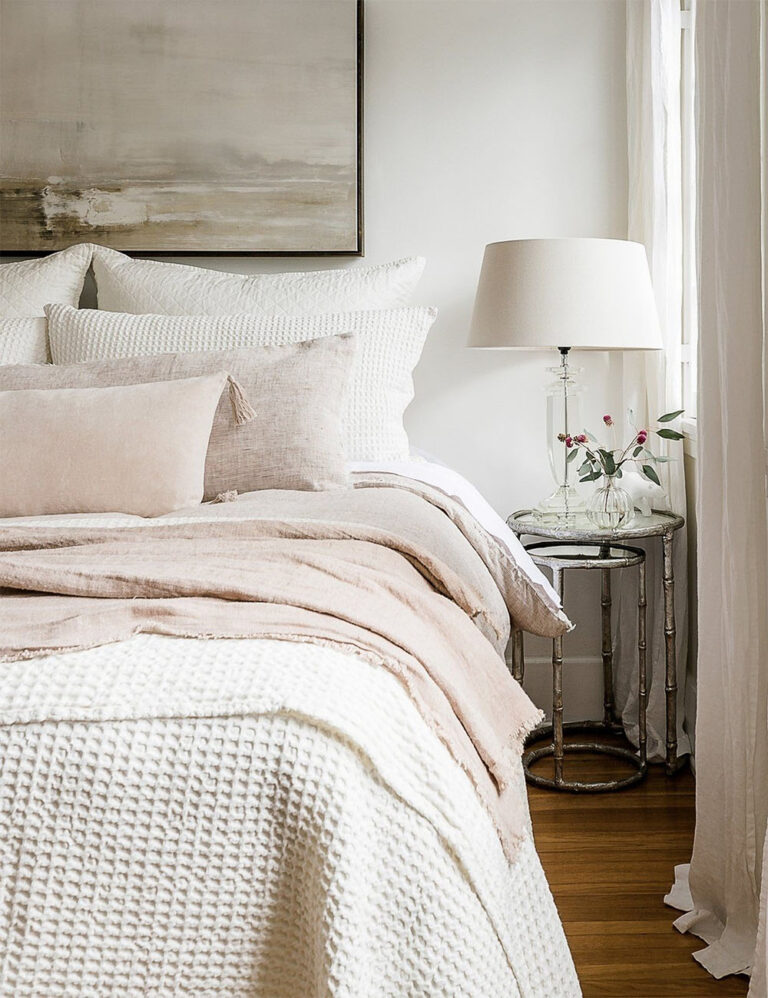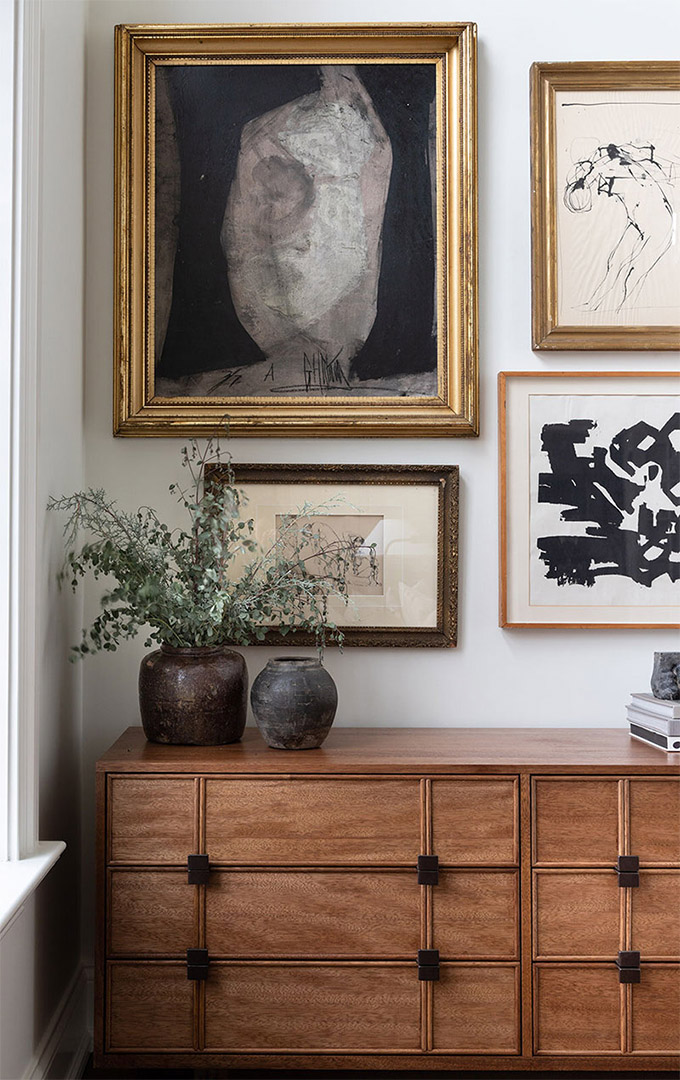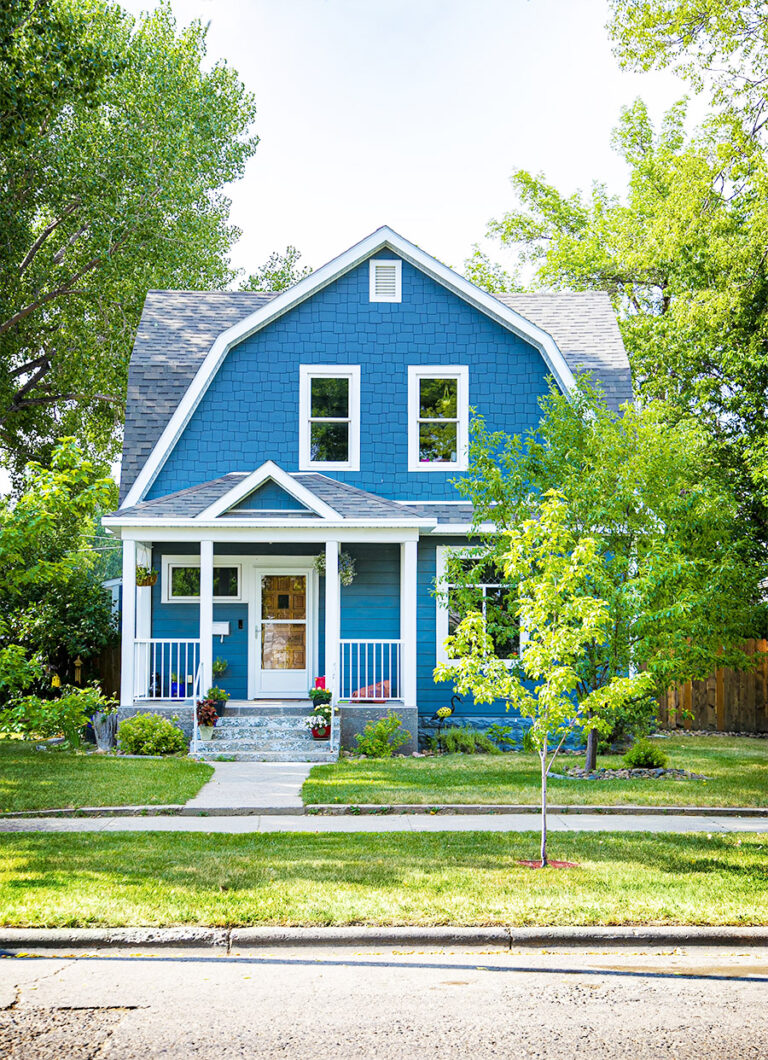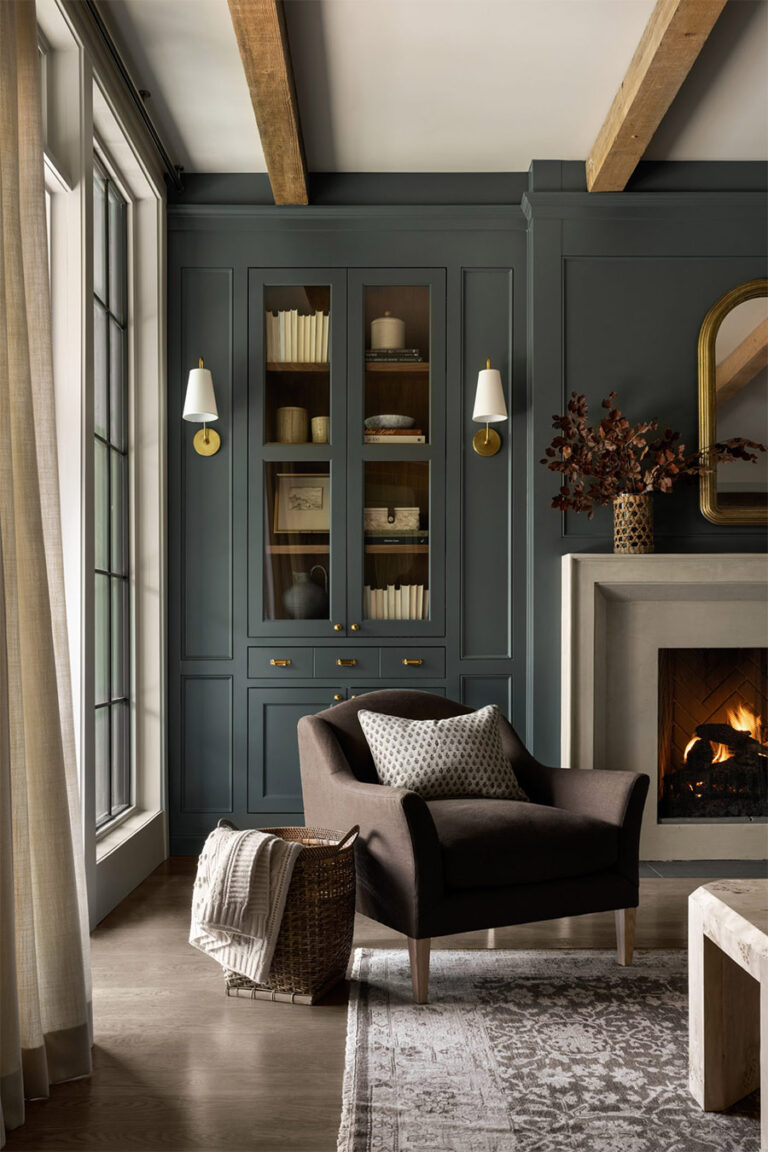The Secret to Good Design: Symmetry and Balance
This post may contain affiliate links. If you make a purchase through one of my links, I may make a small profit at no expense to you. For further information, please view my policies.
Why symmetry and balance are crucially important in interior design
Symmetry and balance are the secret sauce ingredients that can transform an ordinary space into a masterpiece. Without them, a room can feel uncomfortable and off-balance. Symmetry and balance can help us to feel more at ease and relaxed within a space. Because who wants to feel sad in their own home?
By using these fundamental principles of design, you can create a space that feels like it has been carefully curated by a team of expert designers. These principles work together to create a space that feels grounded and put-together, making it feel inviting, high-end and timeless.
So let’s jump right in!
How to achieve Balance in Interior Design
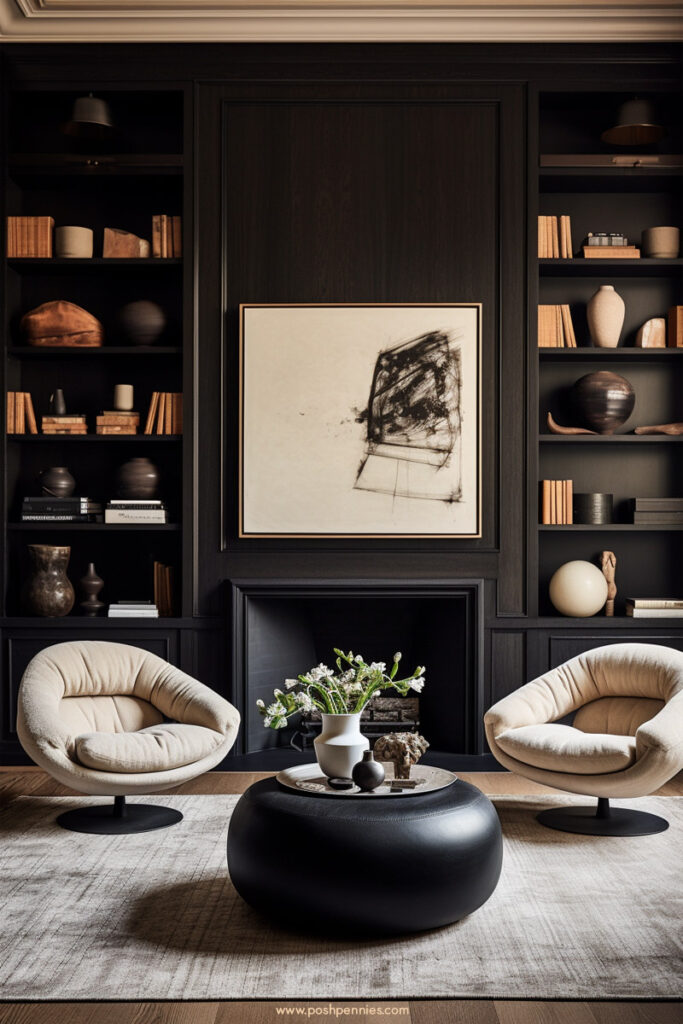
When you’re decorating a room there’s always a lot to think about, but one of the most important elements to consider is balance. Ensuring your room is always balanced is pretty much a constant throughout the whole process.
Balance is an important principle in interior design because it helps to create a sense of harmony and stability in a space. A well-balanced room design feels stable and secure, which can create a sense of “groundedness” and comfort.
Balance can be achieved in many different ways! But one of the most aesthetically pleasing and most effective methods is through symmetry. Symmetry has always been an attractive feature for humans, so understanding how to use it effectively in interior design can help give your home a professional and put together look, and can even make it appear more expensive.
Let’s take a closer look at three types of balance used in interior design to understand why they’re so powerful!
Types of balance in Interior Design
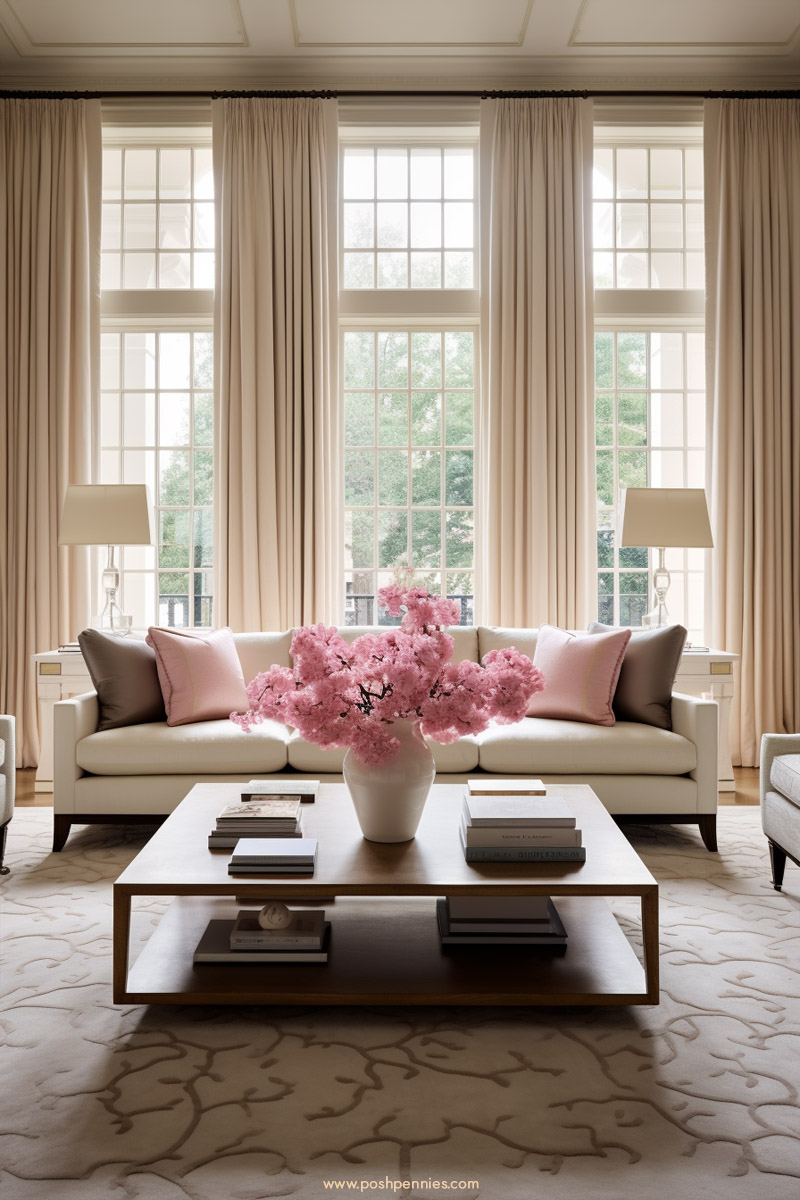
There are three types of balance that designers typically work with:
- symmetrical
- asymmetrical
- radial
Balancing the elements in a space helps to create a visual hierarchy, where certain objects or areas stand out more than others. This can be used to draw attention to focal points or create a sense of flow throughout the space. Without balance, a room can feel cluttered or disjointed, and may not function well for its intended purpose. Symmetry and balance are essential in interior design to create a cohesive, harmonious, and functional space.
Symmetrical Balance

You can achieve symmetrical balance in interior design by placing identical or similar objects or elements on either side of a central axis. This creates a sense of formal balance and order.
If you’re decorating in a traditional or classical style you can achieve symmetry and balance by placing identical objects on either side of a central axis, such as two identical chairs flanking a fireplace, or two matching table lamps on a console. You can of course also use symmetrical balance in more contemporary settings, such as in the arrangement below!
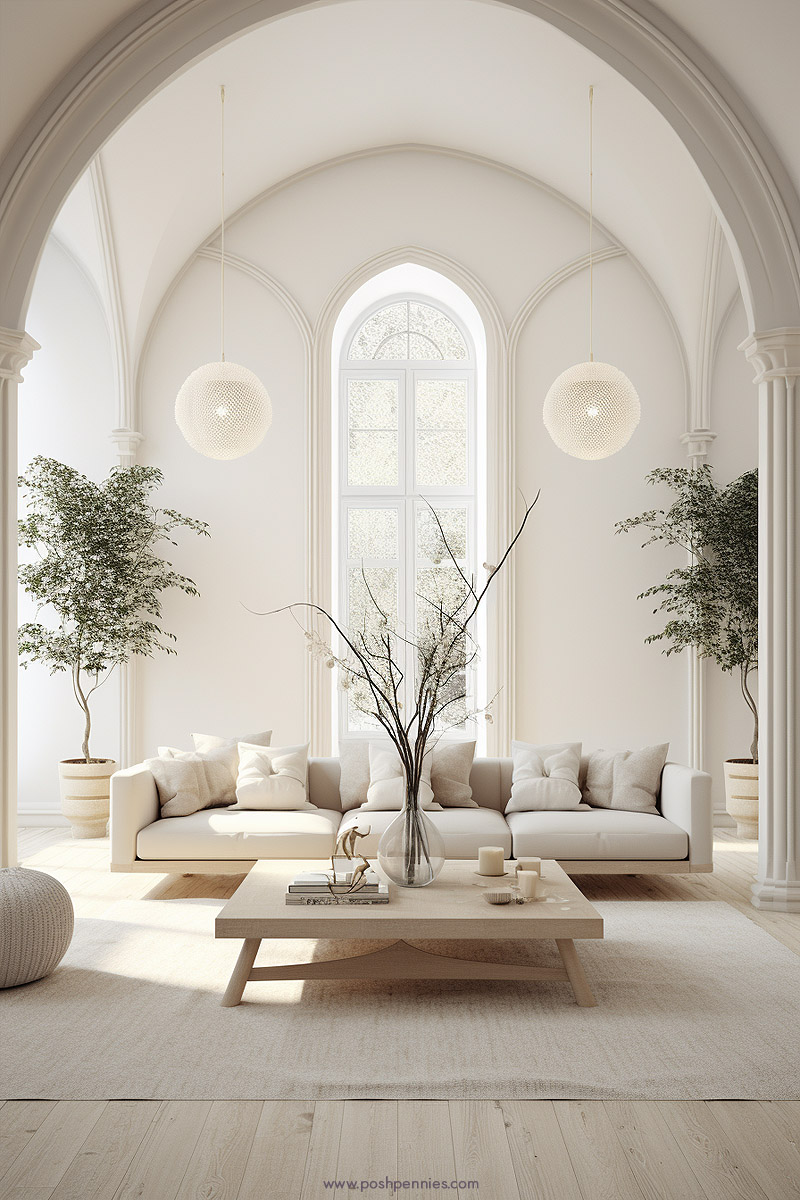
Advantages of symmetrical balance:
- Formality and order: Symmetrical balance creates a sense of formality and order, making it suitable for traditional or classical interiors.
- Ease of arrangement: Symmetrical balance is easy to achieve and can be a good solution when working with a limited selection of furnishings or decorative objects.
- Sense of stability: Symmetrical balance creates a sense of stability and grounding, making it a good choice if you want to create a feeling of calm.
Disadvantages of symmetrical balance:
- Lack of dynamism: Symmetrical balance can be static and lack the visual interest and dynamic movement of asymmetrical or radial balance.
- Predictability: Symmetrical balance can sometimes feel predictable or safe, lacking the boldness or creativity of more unconventional design approaches.
- Limitations: Achieving perfect symmetrical balance can be challenging in irregularly shaped spaces or when working with objects that are not identical.
- Cost – having two of something costs more than having just one!
Examples of symmetrical design in interior design:
A traditional living room with two identical sofas facing each other, flanked by two matching sets of side tables and lamps:

A symmetrical bedroom with two identical bedside tables and lamps, two matching stools, and a centrally placed bed with identical throw pillows:

Two identical table lamps flanking a large mirror in an elegant foyer:

If you’re aiming for a sense of formality and order in your interior, symmetrical balance could be your go-to choice. However, it can also lack the dynamic movement of other design approaches and might come across as predictable.
Asymmetrical balance

In interior design, achieving asymmetrical balance involves placing different objects, forms, or elements on either side of a central axis while maintaining visual equilibrium. Essentially, it occurs when dissimilar objects possess equal visual weight or “eye-appeal.” Asymmetrical balance imparts a sense of movement and dynamism and is a frequent choice for modern or contemporary interiors. Unlike symmetrical balance, which involves repeating or mirroring items along a central axis, asymmetrical balance focuses on creating harmony through the strategic arrangement of different elements without duplication.
You can achieve asymmetrical balance in various ways:
- Arrange objects with varying visual weights to create balance.
- Balance compositions by incorporating contrasting colors and textures.
- Utilize negative space, the empty area around objects, to establish balance.
Advantages of asymmetrical balance:
- Dynamism and interest: asymmetrical balance creates a sense of movement and interest, making it suitable for modern or contemporary interiors.
- Creativity and flexibility: asymmetrical balance allows for greater creativity and flexibility, as objects can be arranged in a more unconventional or unique way.
- Unique focal points: asymmetrical balance can create unique focal points and draw attention to specific objects or areas in a space.
Disadvantages of asymmetrical balance:
- It can be difficult to achieve balance: objects need to be arranged in a way that achieves visual equilibrium – this can take practice and patience to accomplish.
- Lack of formality: asymmetrical balance can lack the formality and order of symmetrical balance, making it less suitable for traditional or classical interiors.
- Potential for clutter: asymmetrical balance can become cluttered or overwhelming if objects are not carefully selected and arranged.
Examples of asymmetrical design in interior design:
A cozy contemporary asymmetrical living room with warm tones.

A contemporary bedroom with several asymmetrical elements.

A bedroom with a large shelving unit on one side, balanced by a clean white wall with a single, bold painting and a single hanging light fixture on the other side.

Asymmetrical balance can create a sense of movement and interest in interior design and is often used in modern or contemporary interiors. However, it can be challenging to achieve and can lack the formality and order of symmetrical balance.
Radial Symmetry and Radial balance

In interior design, both radial balance and radial symmetry play a role in creating visually appealing and harmonious spaces.
- Radial Balance in Interior Design: Radial balance refers to a design approach where items are arranged around a central point, either extending inward or outward. The central point acts as the focal point, drawing attention towards it. A great example of radial balance is a circular light fixture hanging from the ceiling, with chairs or furniture arranged around it. This arrangement creates a sense of equilibrium and focus on the central item.
- Radial Symmetry in Interior Design: Radial symmetry is another design concept where elements are repeated or mirrored around a central axis, much like the spokes of a wheel. This type of balance is almost circular in nature, with items distributed evenly around the central point. One example of radial symmetry in interior design is a room with identical furniture pieces placed equidistantly around a central focal point, such as a fireplace. Another example is a round dining table surrounded by an equal number of chairs, creating a symmetrical and harmonious setting. Radial symmetry brings a sense of order and stability to a space, evoking a feeling of calmness and elegance. It is commonly used in formal and traditional interior design styles.
These principles contribute to the overall balance, harmony, and aesthetics of a space, allowing interior designers to creatively achieve different moods and styles in their projects.
Use radial design elements to accentuate your home’s unique architectural features, like curved walls or a spiral staircase. Enhance the aesthetics by placing a round table against a curved wall, or arranging circular furniture around a spiral staircase. By doing this, you can emphasize these distinctive features and create a more visually appealing and harmonious space!
Examples of radial design in interior design:
Chairs positioned around a circular table:

A round or oval table placed inside a curved alcove:
It’s worth mentioning that “radial” doesn’t have to be strictly circular: while circular forms are often used in radial designs, the technique can be applied to any shape that has a central point from which the design radiates. For example, a room with a rectangular layout could still use radial symmetry by placing a single focal point in the center and arranging furniture and decor in a way that radiates outward from that point.
Achieving Visual Balance in Interiors
Now that we understand the basics of symmetry and asymmetry, let’s take a closer look at balance.
Balance is an important principle of interior design that can be applied in a variety of ways to enhance the look and feel of a space. Below I’ll give you a bunch of practical applications and examples of how balance can be used to enhance your interiors!

Tips and Tricks to achieve visual balance

Using Furniture and Decor Elements of Equal Visual Weight
One of the easiest ways to achieve visual balance is by using furniture and decor elements of equal visual weight. This means choosing items that have a similar size, shape, or visual presence. For instance, if you have a large sofa on one side of the room, you could try balancing it out with a large bookshelf or artwork on the other side.
Distributing objects and accessories in a space

Distributing objects and accessories is a great way to achieve visual balance in a space. For example, let’s say you have a large bookshelf but all of your books are stacked on one side. To achieve visual balance, you could try to distribute your books throughout the shelf, interspersing them with decorative items like vases or picture frames.
Another example would be a bedroom with two nightstands on either side of the bed. If one nightstand has a lamp, a book, and a vase of flowers, and the other nightstand is empty, the room will feel unbalanced. You don’t necessarily have to add an identical lamp to the second nightstand, but if you add decorative elements of about the same size to the empty nightstand, the room will feel more balanced (congrats, 🙌 you just achieved asymmetrical balance!).
Remember that when you’re distributing objects and accessories, it’s not just about adding more items to a space. It’s about strategically placing items in a way that creates visual harmony and balance. You can achieve this by playing with the height, size, and color of objects, as well as the negative space around them.
Playing with Repetition Through color, texture, and pattern

In crafting a balanced space, repetition stands as a cornerstone of design. A whisper of familiarity that ensures the senses are at ease, recognizing and acknowledging the rhythm of the elements. Whether through the colors, the tactile richness of texture, or the geometry of pattern, repetition guides us on a journey where unity and harmony reign supreme, transforming ordinary spaces into living sanctuaries!
Related reading: How to Mix Patterns & Fabrics Like a Designer!
Consider the room I designed above as an example. The pink checkered rug is playful and striking and catches the eye. But if I hadn’t repeated the checked pattern on the pillows and brought the pink into more elements of the decor, it would have easily felt as if the rug didn’t quite belong. Ensuring consistency and repetition throughout the room brings harmony to the space.
Another way to achieve balance through color is by sticking to monochromatic color schemes. So, the repetition of the same color throughout a space. A monochromatic palette consists of different shades, tints, and tones of one color. By keeping all the colors within one family, you can create a unified look that feels balanced and harmonious without feeling overwhelming or chaotic.
Creating focal points

Creating focal points in a room is an effective way to achieve visual balance and proportion. A focal point is a striking element within a space that commands the viewer’s attention and becomes the center of visual interest. In interior design, focal points serve several important purposes:
- Guiding Attention and Creating Direction: Focal points direct the viewer’s exploration of the room and help visitors navigate and explore the design. They act as a reference point that grounds the design, creating balance and harmony in the overall composition.
- Evoking Emotional Response: Focal points enhance the viewer’s experience by inciting feelings of awe, curiosity, wonder, or tranquility (just a few examples – you could try to evoke any kind of feeling you like!). They add depth and meaning to a space, turning it into an immersive and emotionally engaging environment.
- Highlighting Key Features: Focal points allow designers to spotlight the strengths of a space by accentuating specific furniture, views, architectural details, or decorative objects. They draw attention to the essential aspects of the design, enhancing the visual hierarchy.
Elements that can become focal points in a room include furniture, lighting fixtures, greenery, artwork, windows, and fireplaces.
Combining different shapes and textures to create harmony
Shapes and textures can also be used to create balance in a room. For example, if a room has a lot of sharp, angular lines, you can balance it out with rounded or curved shapes. Or if a room has a lot of smooth, glossy surfaces, you could balance it out with rough, textured surfaces.
By combining different shapes and textures, you can create a sense of harmony and balance.
Balancing the overall visual weight of a room
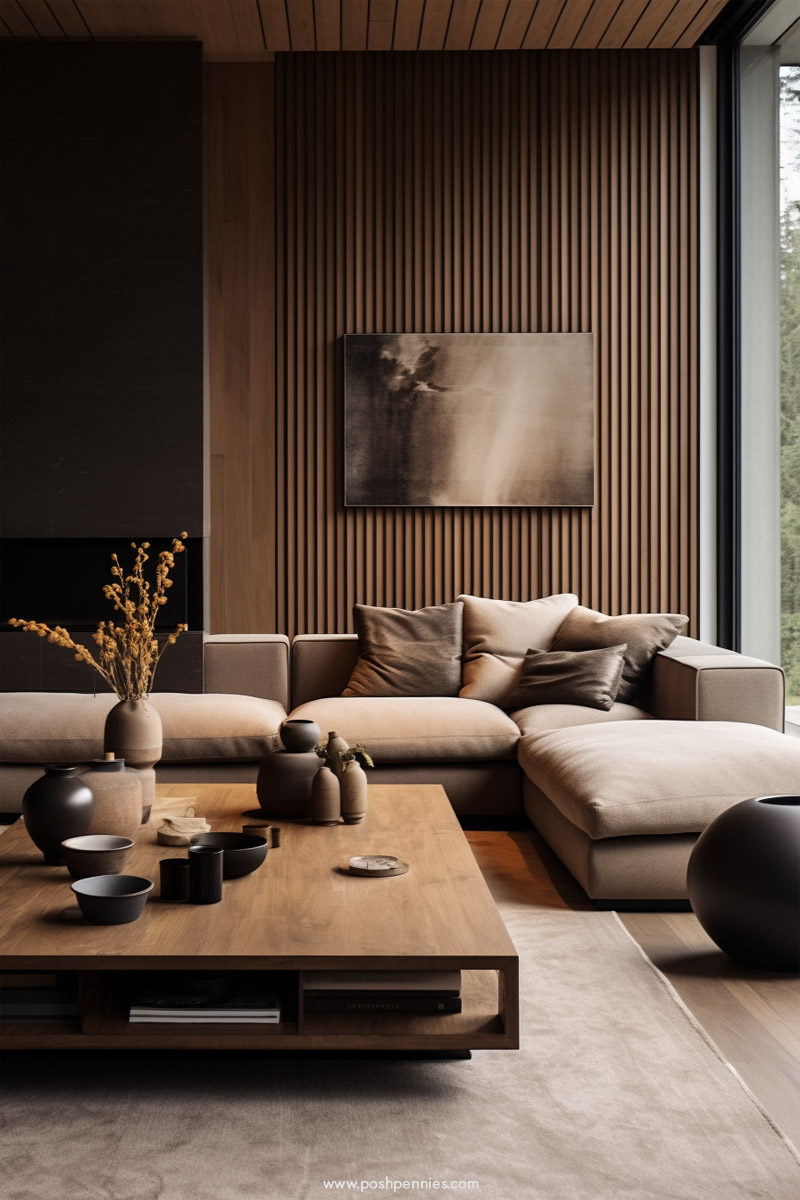
The overall visual weight of a room can also be balanced by distributing furniture and decorative elements throughout the space. For example, if one side of a room feels heavier, balance it out by adding more furniture or decorative elements to the other side, or remove some furniture from the side that feels too heavy!
You can also create balance by incorporating negative space into a room. Negative space is the area around and between objects and can be used to create a sense of balance and proportion in a space.
Let’s Sum It Up: What Have We Learned about Symmetry & Balance?
Symmetry and balance have the power to create an interior that looks and feels luxurious and professionally designed. You can buy all the most expensive furniture in the world but if you don’t balance your room properly, it won’t have the same aesthetic appeal. By understanding the principles of symmetry and balance, you can create a space that is visually balanced and harmonious. By following the principles and tips we went over in today’s article, you can transform your room into one that looks professionally designed!✨
It’s an art that requires a keen eye for well-balanced proportions, colors, and accessories, and the good news is it’s not impossible to learn! I know we went over a lot today, but I promise that with practice, this stuff becomes second nature. Have fun!
Hey there!
Did this article give you some great ideas or teach you something new? Help me keep the content coming! Simply bookmark my Amazon link and then shop through it! Every purchase you make could earn me a small commission, at zero extra cost to you! Your incredible support keeps this little website alive and thriving. Much love, thanks a bunch! 🌟


